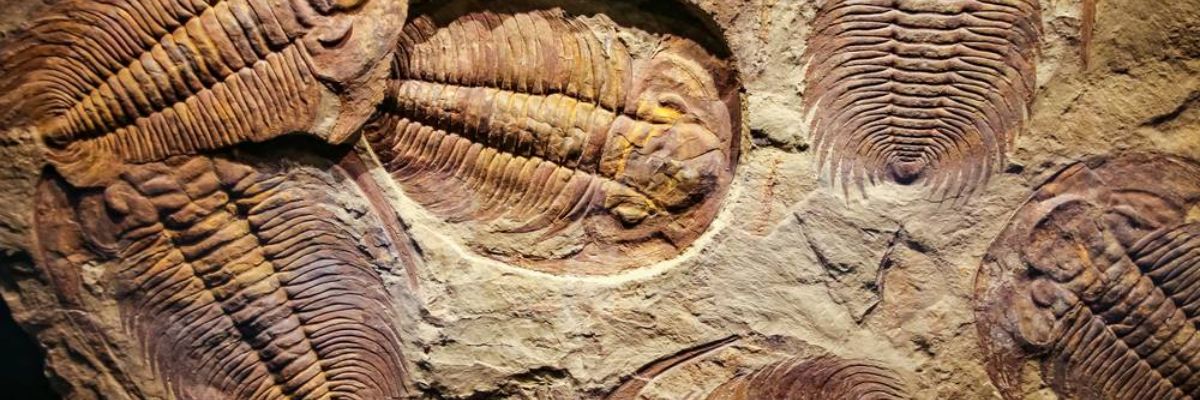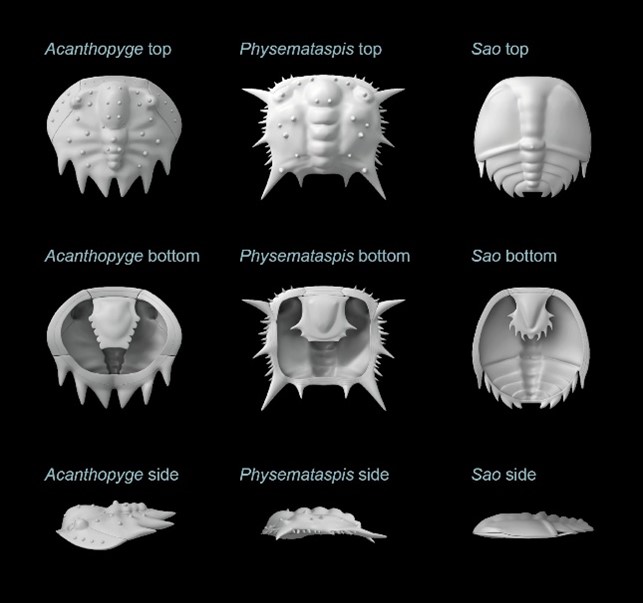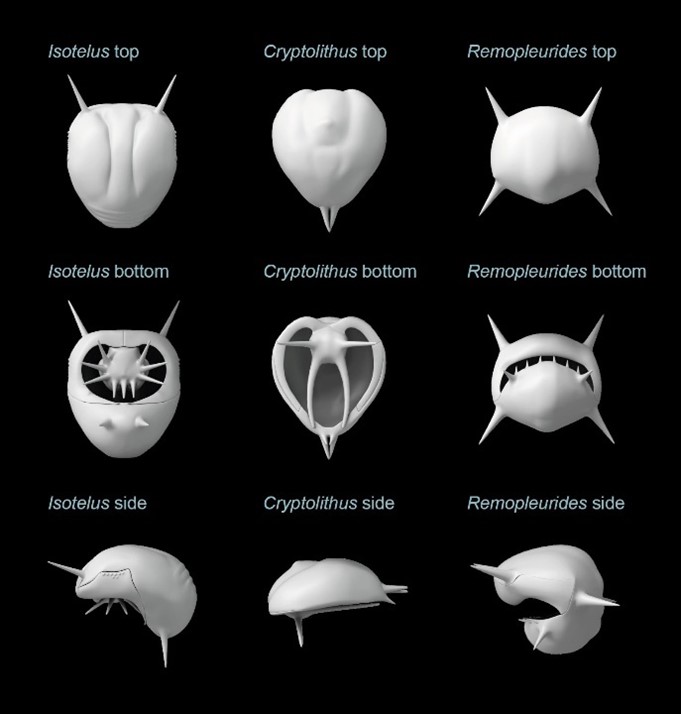
Trilobite planktic larvae were a key part of the food chain in the Paleozoic Era
26. 01. 2023
Trilobite larvae played a vital role as a source of food for certain marine animals. Researchers discovered that the larvae served as an intermediary in the food chain for larger sea organisms that were unable to feed on plankton due to its size. The lead author of the study, published in the journal Palaeogeography, Palaeoclimatology, Palaeoecology, is paleontologist Lukáš Laibl from the Institute of Geology of the CAS. Farid Saleh and Francesc Pérez-Peris from the University of Lausanne also collaborated on the research.
Despite their tiny size – roughly around one millimetre – trilobite larvae had hard shells and can thus be found in relative abundance and well-preserved at many paleontological sites. They have been identified in approximately 150 species and can be divided into two types. Those of the first type resembled adult trilobites and lived on the seabed. Larvae of the second type were globular and were to be found in the seawater floating around like plankton.
At the very beginning of the Paleozoic period, 520–495 million years ago, trilobite larvae lived mainly on the seabed. However, 495–470 million years ago, marine ecosystems began to transform, and certain species of trilobites developed planktic larvae. This occurred several times independent of each other, leading to an increase in the biodiversity of marine organisms.


“It was literally an invasion. Within several tens of millions of years, planktic trilobite larvae flooded the oceans. This was probably because they had plenty of food in the form of increased amounts of unicellular algae in seawater, i.e., phytoplankton. Based on the size of the trilobite larvae, we assume that it’s phytoplankton that most of them fed on. However, the trilobite larvae living on the seabed did not disappear, the marine ecosystem becoming diversified by their planktic counterparts,” explains lead author of the study, Lukáš Laibl from the Institute of Geology of the CAS.
Trilobite larvae as a valuable food source
During the Ordovician period, between 485 and 444 million years ago, a significant number of trilobite larvae was to be found in seawater, ranging in size from 0.3 to 2 millimetres. They had a significant impact on marine life at that time.
“Larger free-swimming organisms cannot feed directly on microscopic planktic algae. An intermediary must therefore be inserted into the food chain – a small planktic organism that eats the algae and is then eaten by something bigger. In today’s seas, for instance, this role is taken on by the smallest of crustaceans or their larvae. In the Ordovician seas, it was the trilobite larvae,” Laibl adds.
Planktic trilobite larvae thus represented an important part of the food chain in ancient seas and served as a food source for marine adult arthropods or the first vertebrates.

Lukáš Laibl works in the Department of Paleobiology and Paleoecology at the Institute of Geology of the CAS. In 2022, he received the Otto Wichterle Award for promising young scientists. (CC)
The study published in Palaeogeography, Palaeoclimatology, Palaeoecology is available here.
The press release (in Czech) is available on the website of the Czech Academy of Sciences here.
Prepared by: Martina Spěváčková and Markéta Wernerová, Division of External Relations, CAO of the CAS
Translated by: Tereza Novická, Division of External Relations, CAO of the CAS
Photo: Shutterstock; Archive of Lukáš Laibl; Jana Plavec, Division of External Relations, CAO of the CAS
 The text and photos labelled CC are released for use under the Creative Commons license.
The text and photos labelled CC are released for use under the Creative Commons license.
Read also
- A trapped state: The pandemic impact on public attitudes, trust, and behavior
- Aerial archaeology: Tracing the footsteps of our ancestors from the sky
- Archaeologists uncover ancient finds along Prague Ring Road
- Our microbiome largely depends on what we eat, says microbiologist Michal Kraus
- The ABCs of writing: Why did its invention mark a turning point for humankind?
- We learn, remember, forget… What can memory actually do? And can we outsmart it?
- New Center for Electron Microscopy in Brno opens its doors to global science
- The hidden lives of waste: What can we learn from waste workers and pickers?
- A unique lab is hidden right beneath Prague’s Vítkov Hill
- Renewables are a strategic investment in European security, scientists say
The Czech Academy of Sciences (the CAS)
The mission of the CAS
The primary mission of the CAS is to conduct research in a broad spectrum of natural, technical and social sciences as well as humanities. This research aims to advance progress of scientific knowledge at the international level, considering, however, the specific needs of the Czech society and the national culture.
President of the CAS
Prof. Eva Zažímalová has started her second term of office in May 2021. She is a respected scientist, and a Professor of Plant Anatomy and Physiology.
She is also a part of GCSA of the EU.